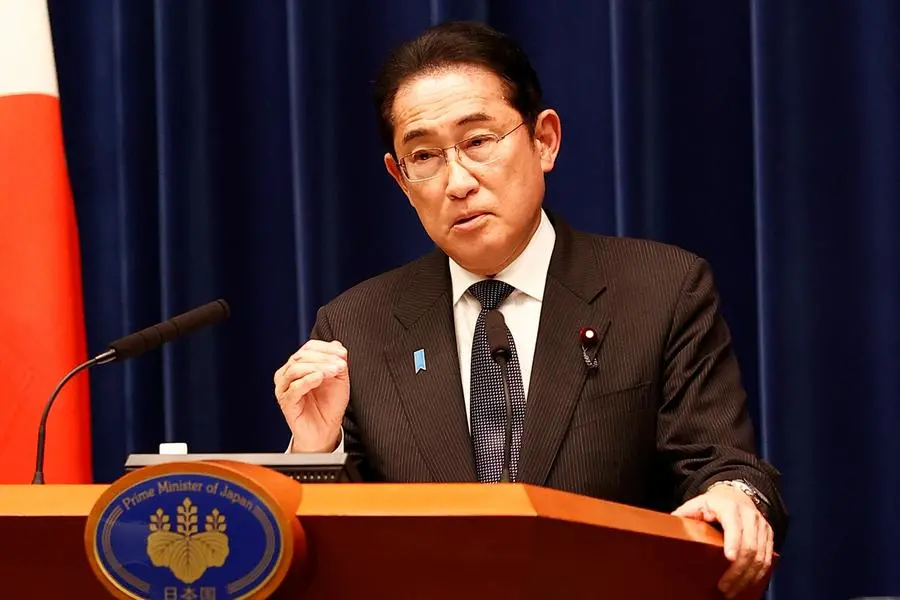PHOTO
TOKYO - Japanese Prime Minister Fumio Kishida's administration will pledge to boost childcare spending and focus on sustaining wage hikes in its mid-year economic policy roadmap, a final draft seen by Reuters showed on Thursday.
The blueprint, expected to be approved by cabinet on Friday, comes amid speculation Kishida could dissolve parliament and call a snap election later this year.
Kishida told reporters on Thursday he was not thinking of dissolving parliament during the current Diet session that closes this month, ending weeks of speculation he could do so as early as Friday.
The roadmap will also say the government will use non-tax revenues to fund an increase in defence spending, so that tax hikes could wait until "2025 or later", the draft showed. That would be later than Kishida's initial plan to raise taxes in 2024.
On Kishida's flagship policy to increase Japan's declining birth rate, the blueprint will pledge to expand payouts to families with children and increase subsidies for medical costs in the next three years, the draft showed.
The blueprint, however, will make no mention of how the spending measures will be funded, saying only the government will reach the decision after "taking a closer look at what specific measures would be taken", according to the draft.
Aside from an increase in childcare spending, the roadmap will stress the need to ensure wages will keep rising and give households more purchasing power.
Specifically, the government will pledge to offer tax breaks to small firms that hike pay and raise the average minimum wage, the draft showed.
The roadmap underscores the administration's hope to put a decisive end to Japan's entrenched deflationary mindset that had kept companies and households from raising pay and spending.
After years of massive spending to cushion the blow from the COVID pandemic, Japan is saddled with debt more than twice the size of its $4 trillion economy - the worst among advanced nations.
The roadmap's focus on spending underscores the challenge Japan faces in fixing its tattered finances, and runs counter to calls by the International Monetary Fund (IMF) to shift to more targeted spending directed to low-income households.
At present, Japan aims to achieve a primary budget surplus, which excludes new bond sales and debt-servicing costs, by the fiscal year ending in March 2026.
For the second straight year, however, the roadmap will make no mention of a timeframe for balancing the budget, the draft showed. ($1 = 139.9000 yen)
(Reporting by Takaya Yamaguchi, additional reporting by Tetsushi Kajimoto; Writing by Leika Kihara; Editing by Emelia Sithole-Matarise and Alex Richardson)





















